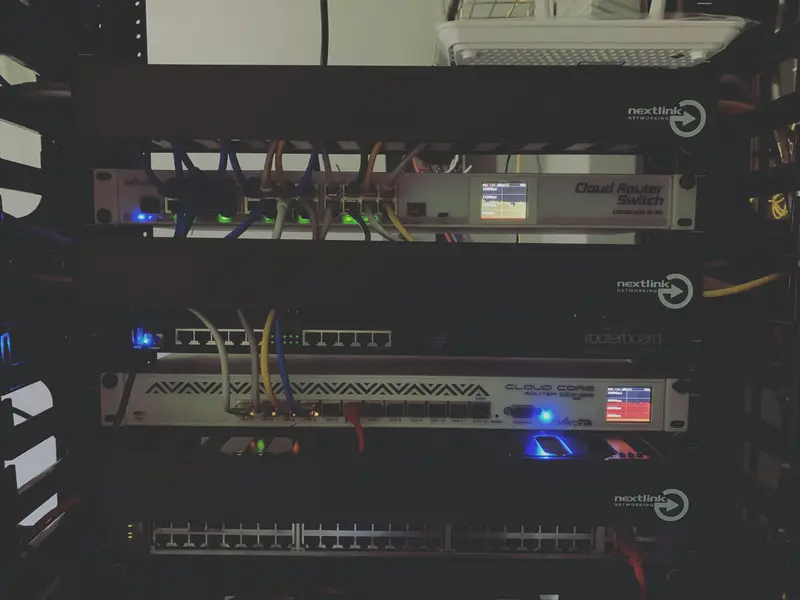⚙️ Managing System Services in Alpine Linux: Simple Guide
Managing system services is like being the boss of your computer’s workers! 👔 Let’s learn how to control services in Alpine Linux. It’s easier than you think! 😊
🤔 What are System Services?
System services are like helpful workers in your computer! 👷
Think of it like:
- 🏭 Workers in a factory doing different jobs
- 🎭 Actors playing roles in a theater
- 🔧 Tools that run automatically in the background
On Alpine Linux:
- 🔄 Services = Background programs doing jobs
- 📋 OpenRC = The service manager (like a supervisor)
- ▶️ Start/Stop = Turn services on and off
- 🔄 Enable/Disable = Set if they start automatically
🎯 What You Need
Before we start, you need:
- ✅ Alpine Linux computer
- ✅ Admin access (root or sudo)
- ✅ Terminal access
- ✅ Basic typing skills
Let’s become service management experts! 🎓
📋 Step 1: Understanding OpenRC
What is OpenRC?
OpenRC is Alpine’s service supervisor! 👨💼
What we’re doing: Learning about Alpine’s service management system.
# Check OpenRC version
rc --version
# See all available services
rc-service --list
# Check running services
rc-status
# See service levels
rc-status --allWhat this does: 📖 Shows information about the service management system.
Command explained:
rc-service= Service control command 🔧rc-status= Check service status 📊--list= Show all available services 📋--all= Show services at all run levels 🔄
Example output:
OpenRC 0.45.2
rc-service --list:
acpid
chronyd
crond
networking
sshd
syslog
Runlevel: default
sshd [ started ]
networking [ started ]
chronyd [ started ]What this means:
- OpenRC is managing your services ✅
- SSH, networking, and time services are running 🔄
- These are essential system services 🛠️
Cool! You understand the service manager! 🤖
Check Service Status
Let’s see what’s running! 👀
What we’re doing: Checking which services are currently active.
# Check specific service status
rc-service sshd status
# Check all running services
rc-status
# Check if service is enabled
rc-update show
# Check service details
rc-service networking statusCommands explained:
rc-service [name] status= Check one service 🔍rc-status= Show all running services 📊rc-update show= Show enabled services 📋
Example output:
* status: started
Runlevel: default
sshd [ started ]
networking [ started ]
chronyd [ started ]
acpid | default
chronyd | default
crond | default
networking | boot
sshd | defaultWhat this means:
- SSH service is running 🔄
- Networking started at boot time 🚀
- Time service (chronyd) is active ⏰
Perfect! You can check service status! 📊
🛠️ Step 2: Starting and Stopping Services
Start and Stop Services
Let’s control services! 🎮
What we’re doing: Starting and stopping services manually.
# Stop a service
sudo rc-service sshd stop
# Check it stopped
rc-service sshd status
# Start a service
sudo rc-service sshd start
# Check it started
rc-service sshd status
# Restart a service (stop then start)
sudo rc-service sshd restartWhat this does: 📖 Controls services manually without changing automatic startup.
Commands explained:
stop= Turn off the service 🛑start= Turn on the service ▶️restart= Stop and start again 🔄status= Check current state 📊
Example output:
* Stopping sshd ... [ ok ]
* status: stopped
* Starting sshd ... [ ok ]
* status: startedSafety tip: Be careful stopping important services like networking! ⚠️
Amazing! You can control services! 💪
Test Service Control
Let’s practice safely! 🧪
What we’re doing: Testing service control with a safe service.
# Install and test with cron (task scheduler)
sudo apk add cronie
# Check if cron is installed
rc-service crond status
# Start cron service
sudo rc-service crond start
# Check it's running
rc-service crond status
# Test restart
sudo rc-service crond restart
echo "Service control test completed! ✅"What this does: 📖 Safely tests service commands with cron.
Why cron is safe:
- 📅 Schedules tasks but not critical for system
- 🔄 Can be stopped and started safely
- 🧪 Good for testing service commands
Excellent! You practiced service control! 🎯
📊 Quick Service Commands
| What to Do | Command | Example |
|---|---|---|
| ▶️ Start service | rc-service name start | rc-service sshd start |
| 🛑 Stop service | rc-service name stop | rc-service sshd stop |
| 🔄 Restart service | rc-service name restart | rc-service sshd restart |
| 📊 Check status | rc-service name status | rc-service sshd status |
| 📋 List all | rc-status | rc-status |
🔄 Step 3: Enable and Disable Services
Auto-Start Services
Let’s set services to start automatically! 🚀
What we’re doing: Configuring which services start when the computer boots.
# Enable a service to start automatically
sudo rc-update add crond default
# Check enabled services
rc-update show
# Disable auto-start
sudo rc-update del crond default
# Check it's removed
rc-update showCommands explained:
rc-update add= Enable service for automatic startup ✅rc-update del= Disable automatic startup ❌default= Normal run level (when system is fully running) 🔄
Example output:
* service crond added to runlevel default
acpid | default
chronyd | default
crond | default
networking | boot
sshd | default
* service crond removed from runlevel defaultWhat this means:
- Service will now start automatically ✅
- Service removed from auto-start ❌
- You control what starts with your system 🎯
Perfect! You control automatic startup! 🌟
Manage Boot Services
Let’s organize boot services! 📋
What we’re doing: Managing which services start at different boot stages.
# Show services at boot level
rc-update show boot
# Show services at default level
rc-update show default
# Add service to boot level (starts very early)
sudo rc-update add networking boot
# Add service to default level (starts after boot)
sudo rc-update add sshd default
# Check all runlevels
rc-update show --verboseRunlevel explained:
boot= Services needed for basic system startup 🚀default= Normal services after system is running 🔄shutdown= Services for system shutdown 🛑
Great! You understand boot management! 📚
🎮 Let’s Practice!
Time for complete service management! 🚀
What we’re doing: Setting up a complete service environment.
# Step 1: Install useful services
echo "Step 1: Installing services... 📦"
sudo apk add cronie
sudo apk add rsyslog
# Step 2: Check what we have
echo "Step 2: Checking available services... 📋"
rc-service --list | grep -E "(crond|rsyslog|sshd)"
# Step 3: Start services
echo "Step 3: Starting services... ▶️"
sudo rc-service crond start
sudo rc-service rsyslog start
# Step 4: Check they're running
echo "Step 4: Verifying services... ✅"
echo "Cron service:"
rc-service crond status
echo "Log service:"
rc-service rsyslog status
echo "SSH service:"
rc-service sshd status
# Step 5: Enable auto-start
echo "Step 5: Enabling auto-start... 🚀"
sudo rc-update add crond default
sudo rc-update add rsyslog default
# Step 6: Show final configuration
echo "Step 6: Final service configuration... 📊"
echo ""
echo "Running services:"
rc-status
echo ""
echo "Auto-start services:"
rc-update show | grep -E "(crond|rsyslog|sshd)"
echo ""
echo "🎉 Complete service setup finished!"
echo "✅ Task scheduler (cron) running"
echo "✅ System logging (rsyslog) running"
echo "✅ SSH access (sshd) running"
echo "✅ All services set to auto-start"What this does:
- Installs useful system services 📦
- Starts all services properly ▶️
- Configures automatic startup 🚀
- Creates a complete service environment 🏗️
Example output:
Step 1: Installing services... 📦
(1/1) Installing cronie (1.6.1-r0)
Step 3: Starting services... ▶️
* Starting crond ... [ ok ]
* Starting rsyslog ... [ ok ]
Step 4: Verifying services... ✅
Cron service:
* status: started
Running services:
Runlevel: default
crond [ started ]
rsyslog [ started ]
sshd [ started ]
🎉 Complete service setup finished!Incredible! You built a complete service environment! 🌟
🔧 Step 4: Creating Custom Services
Create Your Own Service
Let’s make a custom service! 🎨
What we’re doing: Creating a simple custom service script.
# Create service script directory
sudo mkdir -p /usr/local/bin
# Create a simple service script
sudo tee /usr/local/bin/my-service.sh > /dev/null << 'EOF'
#!/bin/sh
# Simple example service
while true; do
echo "$(date): My service is running" >> /var/log/my-service.log
sleep 60
done
EOF
# Make script executable
sudo chmod +x /usr/local/bin/my-service.sh
# Create OpenRC service file
sudo tee /etc/init.d/my-service > /dev/null << 'EOF'
#!/sbin/openrc-run
name="my-service"
description="My custom service example"
command="/usr/local/bin/my-service.sh"
pidfile="/var/run/my-service.pid"
command_background="yes"
depend() {
need net
after networking
}
EOF
# Make service file executable
sudo chmod +x /etc/init.d/my-service
echo "Custom service created! 🎨"What this does: 📖 Creates a complete custom service from scratch.
Service components:
- 📝 Service script = What the service actually does
- 🔧 Init script = OpenRC service definition
- 📁 Log file = Where service writes messages
- 🔄 Background mode = Service runs continuously
Amazing! You created your own service! 🌟
Test Custom Service
Let’s test our creation! 🧪
What we’re doing: Testing the custom service we just created.
# Start our custom service
sudo rc-service my-service start
# Check if it's running
rc-service my-service status
# Check the log file
sleep 65
tail -3 /var/log/my-service.log
# Stop the service
sudo rc-service my-service stop
# Check it stopped
rc-service my-service status
echo "Custom service testing completed! ✅"What this shows: 📖 Your custom service working like official services.
Example output:
* Starting my-service ... [ ok ]
* status: started
Fri May 30 02:30:15 UTC 2025: My service is running
Fri May 30 02:31:15 UTC 2025: My service is running
* Stopping my-service ... [ ok ]
* status: stoppedPerfect! Your custom service works! 🎯
🔍 Step 5: Troubleshooting Services
Debug Service Problems
Let’s fix service issues! 🔧
What we’re doing: Learning to diagnose and fix service problems.
# Check if service exists
rc-service nonexistent-service status
# Check service dependencies
rc-service sshd status --verbose
# View service logs
sudo tail -20 /var/log/messages | grep sshd
# Check service configuration
ls -la /etc/init.d/sshd
# Test service configuration
sudo rc-service sshd checkconfigCommands explained:
--verbose= Show detailed information 📊/var/log/messages= System log file 📋checkconfig= Verify service configuration ✅
Great! You can debug service problems! 🔍
Fix Common Issues
Let’s solve typical problems! 💡
What we’re doing: Fixing common service management issues.
# Problem: Service won't start
echo "Checking common startup issues..."
# Check if service is installed
which crond || echo "Service not installed - run: apk add cronie"
# Check if service file exists
ls /etc/init.d/crond || echo "Service file missing"
# Check permissions
ls -la /etc/init.d/crond
# Check if conflicting services
rc-status | grep cron
# Problem: Service starts but crashes
echo "Checking service stability..."
# Check recent logs
sudo tail -10 /var/log/messages
# Check system resources
free -h
df -h
echo "Service troubleshooting completed! 🔧"Common problems and fixes:
- 📦 Service not installed → Install with apk
- 📁 Missing service file → Reinstall package
- 🔒 Permission denied → Check file permissions
- 💾 Out of resources → Free up space/memory
Excellent! You can solve service problems! 💪
🚨 Fix Common Problems
Problem 1: “Service failed to start” ❌
What happened: Service won’t start due to configuration error. How to fix it: Check logs and configuration.
# Check service logs
sudo tail -20 /var/log/messages | grep service-name
# Check configuration syntax
sudo rc-service service-name checkconfig
# Try starting with verbose output
sudo rc-service service-name start --verboseProblem 2: “Service not found” ❌
What happened: Service name is wrong or not installed. How to fix it: Check available services.
# List all available services
rc-service --list | grep keyword
# Install missing service
sudo apk add package-nameProblem 3: “Service keeps stopping” ❌
What happened: Service crashes due to errors. How to fix it: Check logs and resources.
# Check what caused crash
sudo tail -50 /var/log/messages | grep ERROR
# Check system resources
free -h
df -hDon’t worry! Service problems are solvable! 💪
💡 Simple Tips
- Check logs first 📋 - Always read error messages
- Start simple 🌱 - Test basic services before complex ones
- Enable gradually 🔄 - Don’t enable all services at once
- Monitor resources 📊 - Services need memory and CPU
✅ Check Everything Works
Let’s test your service skills! 🎯
# Create service management test
echo "Testing service management skills... 🧪"
# Test 1: List services
echo "Test 1: Service listing"
rc-service --list > /dev/null && echo "✅ Can list services"
# Test 2: Check status
echo "Test 2: Status checking"
rc-status > /dev/null && echo "✅ Can check service status"
# Test 3: Service control
echo "Test 3: Service control"
sudo rc-service crond status > /dev/null && echo "✅ Can check specific service"
# Test 4: Auto-start management
echo "Test 4: Auto-start management"
rc-update show > /dev/null && echo "✅ Can manage auto-start"
# Test 5: Log checking
echo "Test 5: Log monitoring"
sudo tail -1 /var/log/messages > /dev/null && echo "✅ Can check service logs"
echo ""
echo "🎉 All service management tests passed!"
echo "You're a service management expert! 🌟"Good output shows all service skills working:
Testing service management skills... 🧪
Test 1: Service listing
✅ Can list services
Test 2: Status checking
✅ Can check service status
Test 3: Service control
✅ Can check specific service
Test 4: Auto-start management
✅ Can manage auto-start
Test 5: Log monitoring
✅ Can check service logs
🎉 All service management tests passed!
You're a service management expert! 🌟Perfect! You mastered service management! 🌟
🏆 What You Learned
Great job! Now you can:
- ✅ Use OpenRC to manage services
- ✅ Start and stop services manually
- ✅ Enable and disable automatic startup
- ✅ Check service status and logs
- ✅ Create custom services
- ✅ Troubleshoot service problems
- ✅ Manage boot-time services
- ✅ Monitor system service health
🎯 What’s Next?
Now you can try:
- 📚 Learning advanced service configuration
- 🛠️ Setting up monitoring systems
- 🤝 Managing multi-server environments
- 🌟 Exploring containerized services
Remember: Good service management keeps your system running smoothly! ⚙️
Keep your Alpine Linux services organized and reliable! You’re a system administrator! 💫
Benefits of proper service management:
- 🔄 Reliable system operation
- 🚀 Fast boot times
- 📊 Better resource usage
- 🔧 Easy troubleshooting
You’re becoming a Linux expert! Keep managing! 🌟




